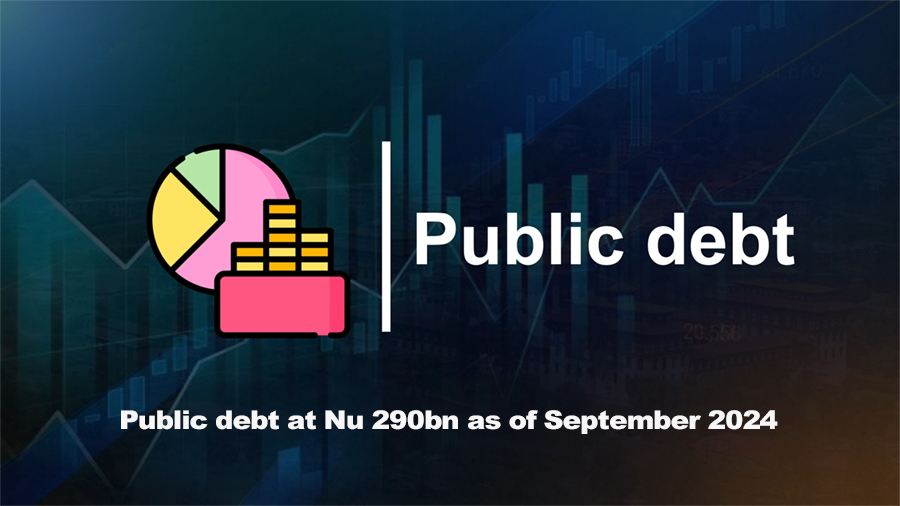
The country’s public debt rose by over Nu 5bn in the third quarter of 2024 compared to the second quarter. The finance ministry’s quarterly Public Debt Situation Report reveals that as of September, the total public debt surpassed Nu 290bn. Of this amount, external debt accounts for a significant 92 per cent.
Total public debt refers to the total amount the government owes to its creditors, which may include individuals, businesses, and foreign entities. This debt includes various forms of borrowing, such as loans and bonds, taken by the government to fund its operations and development projects.
Both internal and external debt saw a slight increase between July and September, contributing to the overall rise in the country’s total debt.
Out of the Nu 266.6bn in external debt, 172.3bn is denominated in Rupees, owed to the Government of India.
The remaining external debt, amounting to USD 1.1bn, is denominated in convertible currencies.
The Asian Development Bank and the World Bank’s International Development Association are the country’s largest convertible currency creditors.
The report indicates that over ten and a half billion ngultrum has been allocated in the current financial year for external debt repayment.
Domestic debt rose from over Nu 21bn in June to more than 23.5bn in the third quarter.
Of this, over Nu 21bn consists of government bonds with maturities ranging from 3 to 12 years, while the remaining two and a half billion are treasury bills.
The report states that despite the high levels of total public debt, the overall debt risk remains manageable because a significant portion of the external debt funds hydropower projects.
Meanwhile, the debt to GDP ratio decreased from over 106 per cent in June to a little over 95 per cent in September.
The decrease indicates that the government is managing its debts better while the country’s economy is doing well.
Kinley Bidha
Edited by Sherub Dorji








